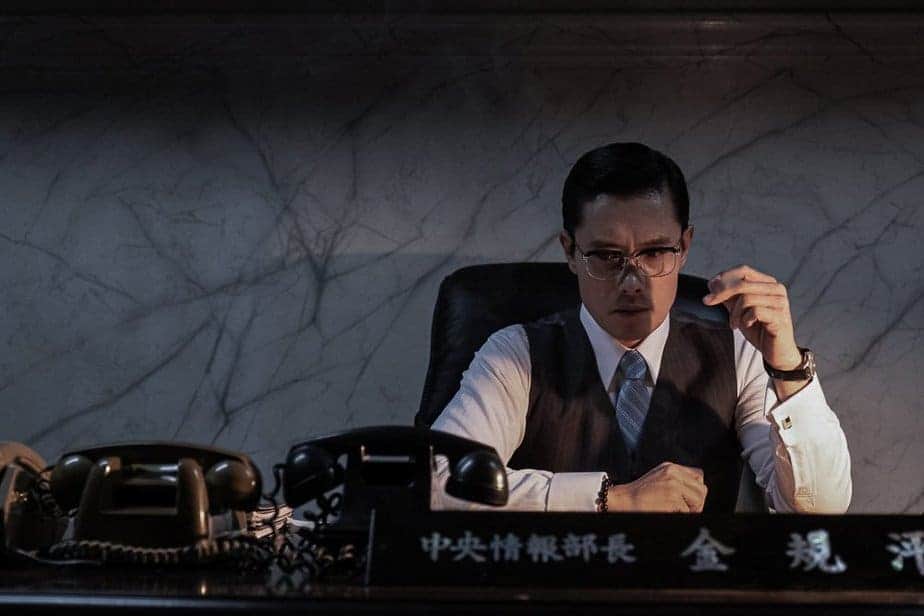It seems that this year for anime is the one for original content (not manga adaptations), with a number of such productions screening on TV, frequently being of the highest quality, with titles like “Deca-Dence“, “BNA” being the first that come to mind. With a narrative that seems to have drawn from “The Cell” and “Paprika”, “ID:Invaded” is definitely among those titles.
Buy This Title
The anime takes place in a world where investigators have the power to dive into a killer's unconscious and see fragmented parts of their psyche. This is referred to as an “id well”, a mental plane that can be digitally entered to collect clues regarding a killer's victims, crime scenes, and motives. As one traverses through an id well, their sights and actions appear as digital projections in the real world for investigators to analyze in real-time. Field analysts assist Well investigators using a tool called “Wakumusubi”, a sort of handheld radar gun that detects and collects delicate “cognition particles”, given off by a person's intent to kill. The scanner can be programmed to collect the killing intent of a specific criminal and add that information to their id well. This helps flesh out the killer's Well for a more thorough investigation. Additionally, the memories of victims encountered in id wells can also add important information to the environment.
Since a person's unconscious thoughts are rarely organized, everything within an id, including people and locations will appear in a fractured or symbolic state and can only be temporarily put together by someone investigating the id well. Additionally, id wells can only be entered by victims or other killers. While it is possible to get hurt or die in an id well, the Well traveler can simply be removed and re-injected into the Well again, though all previous memories from their time in there will be lost.
The anime follows the investigations of Narihisago, a formerly renowned/currently infamous detective now in prison, who is tasked with diving into the id wells of various serial killers. Two years prior to the current events, Narihisago's daughter Muku was brutally murdered by a serial killer, leading Narihisago's wife to commit suicide. These deaths prompted him to hunt down and murder the killer, earning him his prison sentence. He is still depressed and haunted by his wife and daughter's deaths, but also uses this as motivation to take his work seriously and help stop serial killers. However, Narihisago's ability to analyze a killer's weakness has also led multiple serial killers to commit suicide during their time in prison, something the investigation team is wary of. Despite this however, it is shown that the majority of Narihisago's colleagues have great respect for his work. Rookie field analyst Hondomachi becomes an important character during the series after having a brush with death in a serial killer case, eventually also becoming an id well investigator. At the same time, a number of other characters, including Funetaro Momoki, head of the investigation unit, Tamotsi Fukuda, a serial killer with a hole drilled in his head, Takuhiko Hayaseura, the head chief of the investigation unit, and most of all, John Walker, a strange persona that lurks in the id wells and seems to be the cause of the creation of all those serial killers, add even more mystery to the story.
With a narrative base that mixes sci-fi elements with the concept of the connection between the conscious and the unconscious, inevitably, the main element of “ID: Invaded” is a combination of disorientation and mystery, which actually stretches all the way to the technical department. In that fashion, the first episodes, where we watch Narihisago traversing some kind of spaces comprised of different fragments, disconnected from one another, sets up the tone for the whole series in the most brilliant fashion. Ei Aoki's direction is a major factor, with the way he gradually reveals what exactly is going on, retaining both the mystery and the sense of disorientation almost for the whole duration of the series, as the borders between reality and “wells” are quite thin.
Furthermore, the way the past of the main characters is revealed as much as the way it shapes their present and future are also excellently presented, with the plot twists that eventually come to the fore essentially being the main element that allows the series to retain interest from beginning to end. In that regard, and although the tone of the anime includes a certain lightness, the drama is not missing, finding its apogee in episode ten, in one of the most impactful episodes of the title.
The concept of the creation of serial killers and particularly the analysis of their murder intent is another of the very interesting elements of “ID:Invaded, with the fact that the ones who dive into their subconscious have to be killers or victims themselves also adding much to the story, enriching the narrative even more.
Lastly, the action scenes, which follow the same, almost surrealistic path of the main story, are also quite unique, additionally highlighting the excellent job done by NAZ in the animation, particularly regarding the way the fragmented, subconscious settings come together as a puzzle. On the other hand, Ikariya Atushi's character design is almost completely unimaginative, with most of the characters' bodies looking the same (tall and thin) and their faces having many similarities, although not to the point of confusing them, with “tricks” like holes in the head probably taking care of that issue.
“ID:Invaded” features one of the most intriguing narratives we have seen the latest years, in a truly great title, almost completely addressed to a mature audience, due to the richness of its context.















